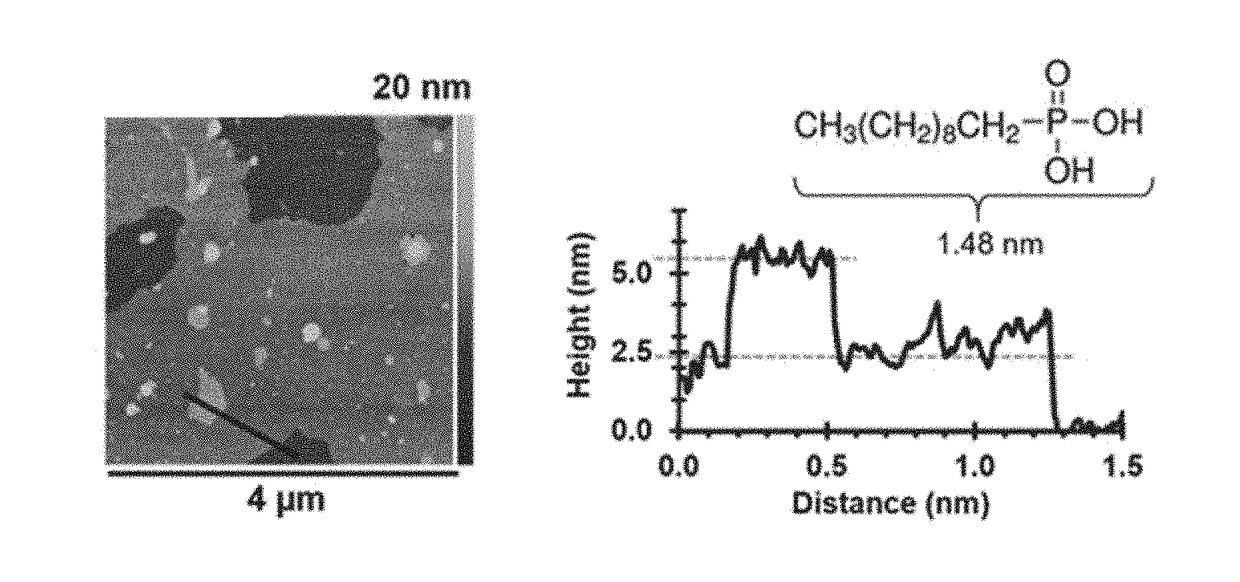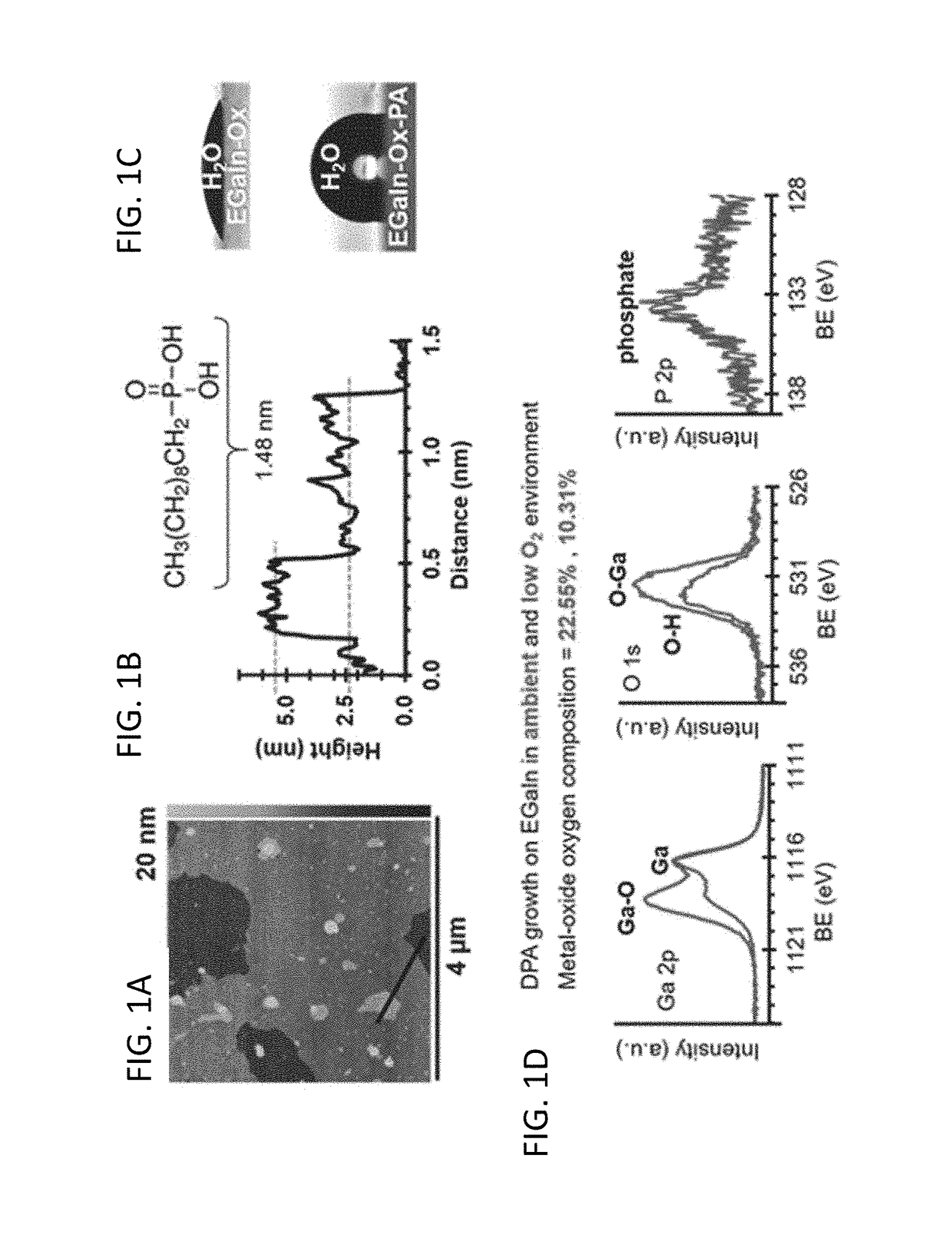Liquid metal interfaces for flexible and reconfigurable electronics
- Summary
- Abstract
- Description
- Claims
- Application Information
AI Technical Summary
Benefits of technology
Problems solved by technology
Method used
Image
Examples
Embodiment Construction
[0065]We present here an approach to overcome the above obstacles in ambient environments. The apparatus and method disclosed herein do not rely on removing the surface oxide and forfeiting the associated benefits of the liquid metals, e.g. GaLMAs, but instead modify the liquid metal interface, e.g. surface oxide of gallium, with phosphonic acid (PA) chemistry. The spontaneous formation of a metal oxide, i.e. Ga2O3, on the surface of the GaLMA fluids is exploited to modify the liquid metal interface with phosphonic acids. The application of phosphonic acids provides several advantages. This organic layer, i.e., phosphonic acids, (1) eliminates adhesion of the metal oxide skin to substrates, e.g. channels, while simultaneously (2) preventing gallium diffusion from the liquid metal / GaLMA into the solid metal electrodes, which preserves their electrical connectivity. Additionally, by modifying the metal oxide surfaces with phosphonic acids it is now possible to (3) control the thicknes...
PUM
| Property | Measurement | Unit |
|---|---|---|
| Fraction | aaaaa | aaaaa |
| Fraction | aaaaa | aaaaa |
| Exposure limit | aaaaa | aaaaa |
Abstract
Description
Claims
Application Information
 Login to View More
Login to View More - R&D
- Intellectual Property
- Life Sciences
- Materials
- Tech Scout
- Unparalleled Data Quality
- Higher Quality Content
- 60% Fewer Hallucinations
Browse by: Latest US Patents, China's latest patents, Technical Efficacy Thesaurus, Application Domain, Technology Topic, Popular Technical Reports.
© 2025 PatSnap. All rights reserved.Legal|Privacy policy|Modern Slavery Act Transparency Statement|Sitemap|About US| Contact US: help@patsnap.com



